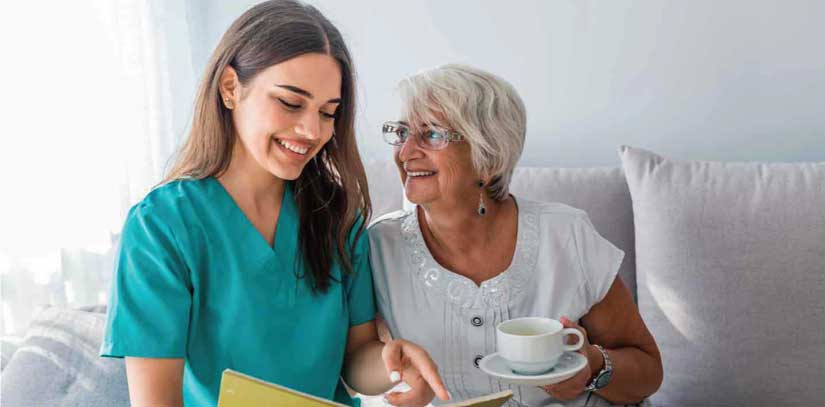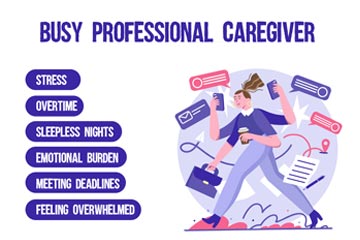Home Safety for Older Adults: Creating a Secure Environment for Aging in Place
To support
older adults’ independence and quality of life, it is crucial that we
ensure their safety and well-being in their homes. By making the necessary home
improvements, we can significantly reduce the risk of falls and create a
more accessible environment that enables them to comfortably age in place. We
will go deeper into useful advice and tactics for preventing falls and
designing an elderly-friendly house in this extensive blog post.
Fall prevention
Older adults’ freedom and safety are seriously threatened by falls. Creating a secure home environment requires taking preventative measures to avoid falls. Let's delve deeper into some helpful advice and tactics:
1.
Eliminate
tripping risks by clearing away loose rugs, clutter, and electrical cords from
walkways to keep floors clear and accessible. Consider using non-slip pads
or double-sided tape to secure rugs.
2.
Adequate
lighting is essential for enhancing visibility and lowering the danger of
tripping. Install bright, energy-efficient lighting in stairwells, entrances,
and other strategic locations. For better lighting at night and to lower the
danger of unintentional falls, consider motion-sensor lights and nightlights.
3.
For
additional support and stability, install grab bars next to toilets and bathtubs
in bathrooms, as well as handrails on stairways. Make sure they are mounted
securely and are able to support weight.
4.
To insure
floor safety, use non-slip flooring materials or apply non-slip coatings to
areas that are prone to slips, such as bathrooms and kitchens. Maintain dry
flooring and quickly mop up any spills.
5. Promote good foot ware by encouraging older adults to wear
supportive, well-fitting shoes with non-slip soles both inside and outside of
the home. Avoid walking in socks or slippers as they can increase the
likelihood of slipping.
6. De-clutter and organize your space by placing furniture and other items in a way that makes movement simple and minimizes the chance of stumbling or bumping into things. To reduce needless bending or stretching, keep commonly used items close at hand.
Home accessibility
Older adults can move about their surroundings with confidence and freedom when their home environment is fully accessible. Here are some useful tips to improve accessibility:
1.
Improve
entrances and exists by Installing ramps or handrails at entryways to
allow mobility aids such as wheelchairs or walkers. Make sure the doorways
are broad enough to allow easy movement. Consider automatic door
openers for added convenience.
2.
To
promote safe and independent toileting and bathing, consider installing higher
toilet seats, grab bars near toilets and bathtubs, and walk-in showers. In the
shower or tub, consider using non-slip mats or adhesive strips to add
additional stability.
3.
Adjust
kitchen counters so that individuals with restricted mobility can sit
comfortably at them. To make objects easily accessible,
install pull-out shelves and drawers. Traditional knobs on faucets tend to
be more difficult to use than lever handles. To improve visual perception,
use contrasting colors for the countertops and cabinetry.
4.
Place a
sturdy chair or stool close to the bed to make standing and sitting easier.
Install bed rails for increased stability and stop falls while you sleep.
Make sure there is enough room to move around the bed.
5.
Install
handrails on both sides of staircases, and make sure they are strong and
comfortable to hold onto. If climbing stairs becomes difficult, think about
installing a stairlift or a ramp. For increased safety, put non-slip treads to each
step.
6.
To lower
the risk of falls, consider using non-slip flooring materials such
low-pile carpeting, textured vinyl, or hardwood with a matte finish. Remove any
loose area rugs or carpeting.
Additional safety considerations
For older individuals' general wellbeing, addressing other safety issues is essential in addition to fall prevention and accessibility changes. Let's examine a few crucial factors in greater detail:
1.
To increase
early detection of fires, install smoke detectors, ideally
interconnected, on every level of the house. Inspect smoke detectors regularly
and change the batteries as necessary. Implement and practice a fire
escape plan with well-defined escape routes.
2.
Install
carbon monoxide detectors close to bedrooms and common spaces to monitor for
possible leaks from heating systems, gas appliances, or vehicles in adjacent
garages. Check and maintain fuel-burning appliances on a regular basis.
3.
Protect
your home from intruders by installing deadbolt locks, peepholes, and a
reliable security system. To increase visibility and deter trespassers, use
adequate outdoor lightings, motion-sensor lights and well-lit walkways. Trim
plants and shrubs to remove potential hiding places close to windows and doors.
4.
Create a
system for keeping track of medications, including pill boxes and reminder
systems. Make sure to give precise dosage and timing instructions, use
proper disposal for any unused or expired medications, and seek advice from
medical professionals.
5.
Prepare
for emergencies by drafting an emergency plan that includes vital contact
information, medical advice, and evacuation protocols. Create an emergency
supply kit containing the necessary goods, such as medicines, food, water,
flashlights, and first aid supplies. Regularly review and revise the plan,
taking into account any unique demands or requirements.
6.
Maintaining
a property involves checking it frequently for potential dangers such as wobbly
handrails, uneven flooring, or damaged electrical wiring. To avoid slips and
falls, keep outdoor spaces clean and clear of debris. Schedule routine
maintenance checks to ensure that heating, cooling, and electrical systems
are operating safely and effectively.
Conclusion
By making appropriate home modifications and implementing safety measures, we can create a secure and accessible environment for older adults to age in place comfortably. Fall prevention strategies, home accessibility modifications, and additional safety considerations work together to promote independence and reduce the risk of accidents. Prioritizing home safety empowers older adults to enjoy their homes while maintaining their desired level of independence. By investing in home safety, we create a nurturing environment that supports their well-being and enables them to thrive as they age in place.




